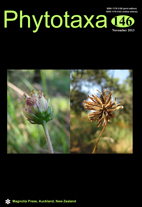Abstract
The generic taxonomy of the Nothofagaceae is revised. We present a new phylogenetic analysis of morphological characters and map these characters onto a recently published phylogenetic tree obtained from DNA sequence data. Results of these and previous analyses strongly support the monophyly of four clades of Nothofagaceae that are currently treated as subgenera of Nothofagus. The four clades of Nothofagaceae are robust and well-supported, with deep stem divergences, have evolutionary equivalence with other genera of Fagales, and can be circumscribed with morphological characters. We argue that these morphological and molecular differences are sufficient for the four clades of Nothofagaceae to be recognised at the primary rank of genus, and that this classification will be more informative and efficient than the currently circumscribed Nothofagus with four subgenera.
Nothofagus is recircumscribed to include five species from southern South America, Lophozonia and Trisyngyne are reinstated, and the new genus Fuscospora is described. Fuscospora and Lophozonia, with six and seven species respectively, occur in New Zealand, southern South America and Australia. Trisyngyne comprises 25 species from New Caledonia, Papua New Guinea and Indonesia. New combinations are provided where necessary in each of these genera.

